The engines look well moulded with cooling fin detail on the cylinders.
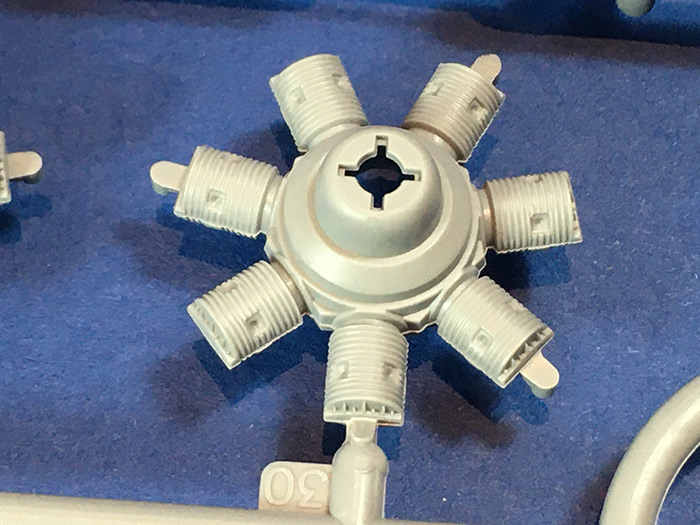
The engine cooling gills are moulded closed.
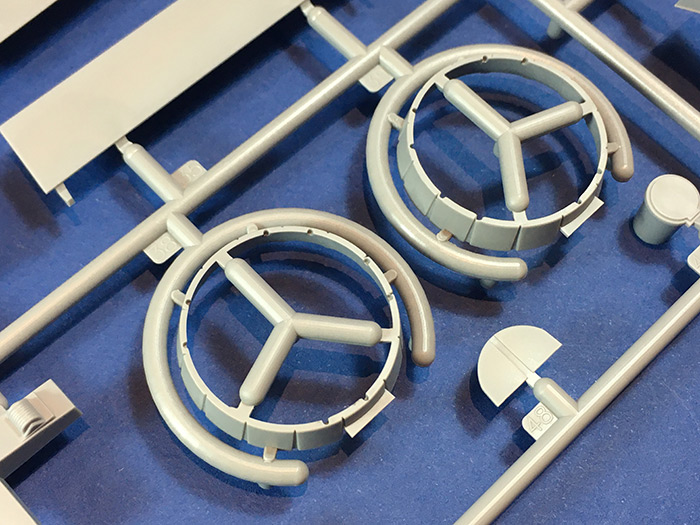
While on the subject of the engines, the assembly looks rather complex with a great deal of pipework to be added. I think that this detail will be visible only if the cowlings are left off which may have been intended as an option by ICM – though this is not really made obvious in the instructions.
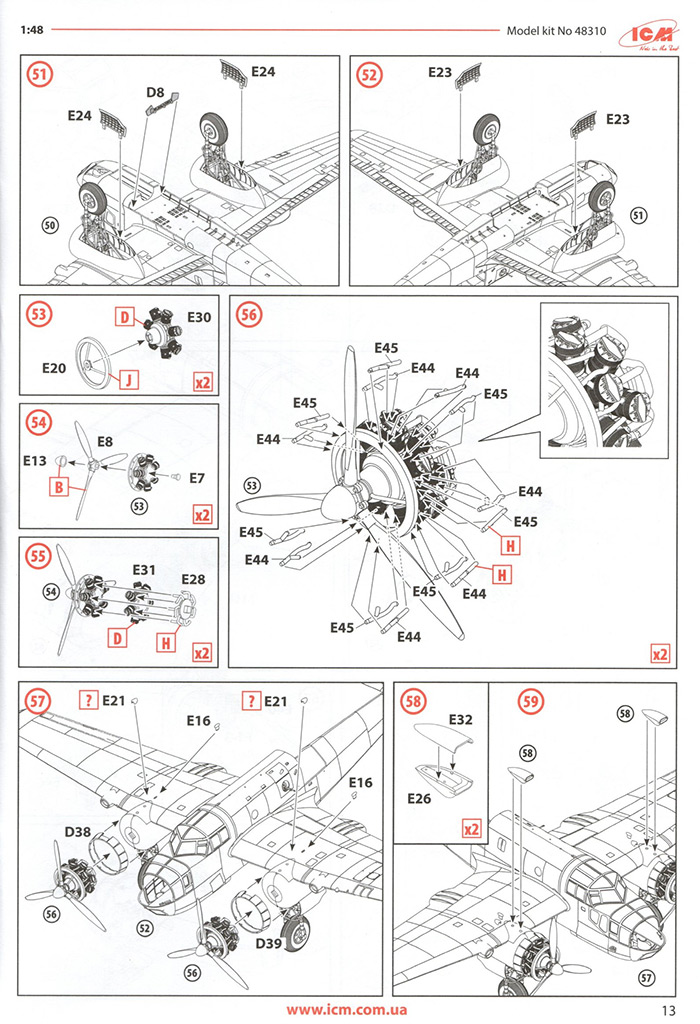
The Beaufort suffered problems with the airflow across its wings resulting in semi-circular extensions being fitted to the trailing edges of some aircraft. This problem apparently was later fixed when different engines were fitted which had wider nacelles.
ICM provides parts for trailing edges both with and without the extensions so the modeller will need to ensure that they fix the correct parts appropriate to the aircraft that they are modelling.
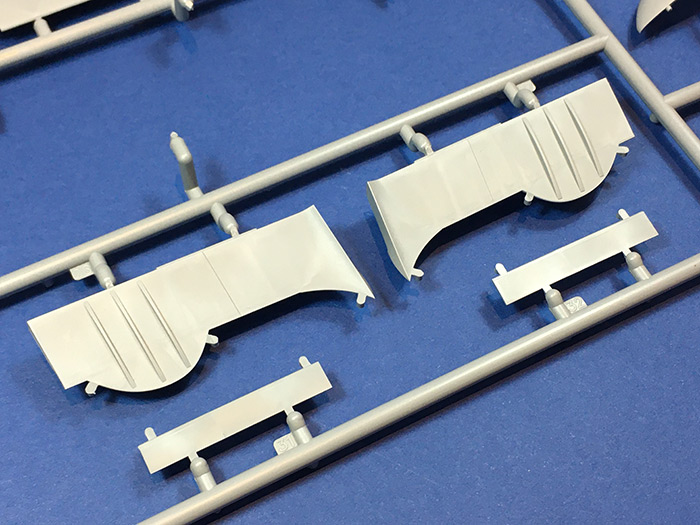
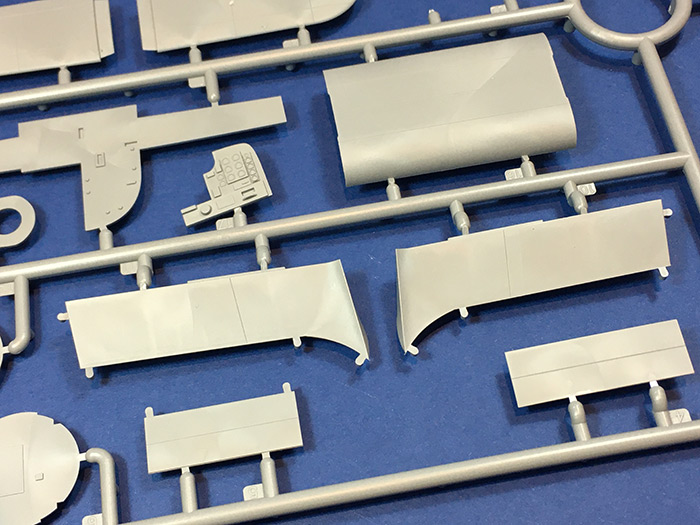
The Beaufort had fabric control surfaces on the rudder and elevators and the fabric effect on the kit parts looks very good to me.
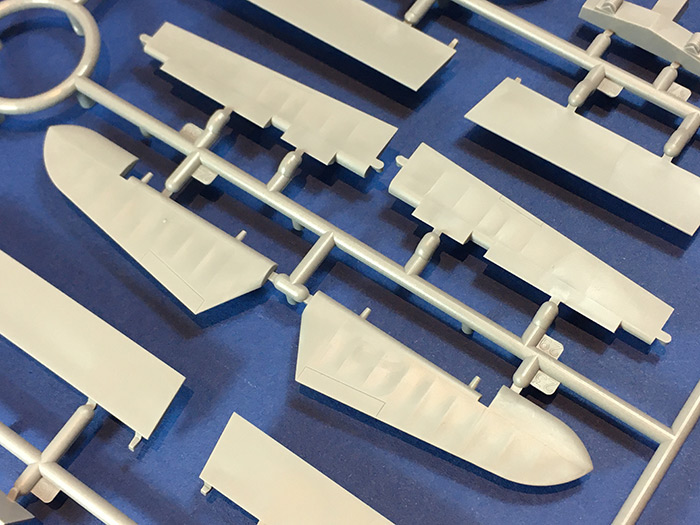
The Beaufort’s wingtips had large identification lights on both the leading and trailing edges. The wingtips are supplied in the kit as clear parts rather than having separate lights. I suppose it would be possible to drill into the inside surfaces of these and to then fill the resulting holes with red and green paint as appropriate to represent the bulbs.
I think that fairing these clear parts into the wings will need to be done carefully as they have no location points and so just butt join the tips of the wings. However, I’m sure that with careful sanding and polishing (perhaps finishing with a polishing disk in a modelling drill set to a very low speed) they could be made to look very effective.
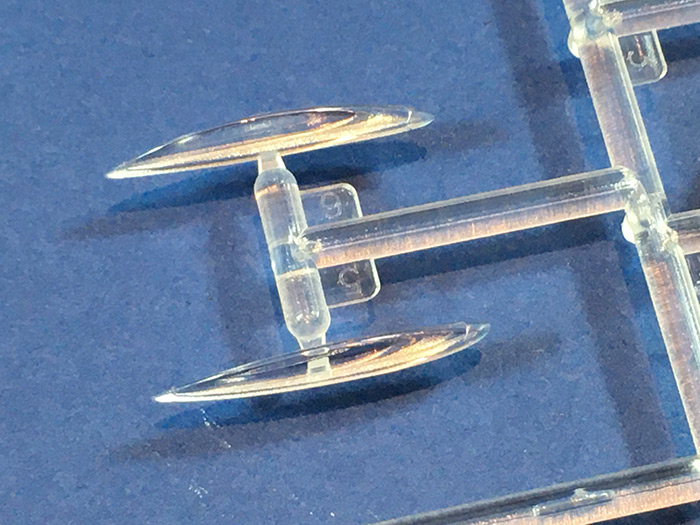
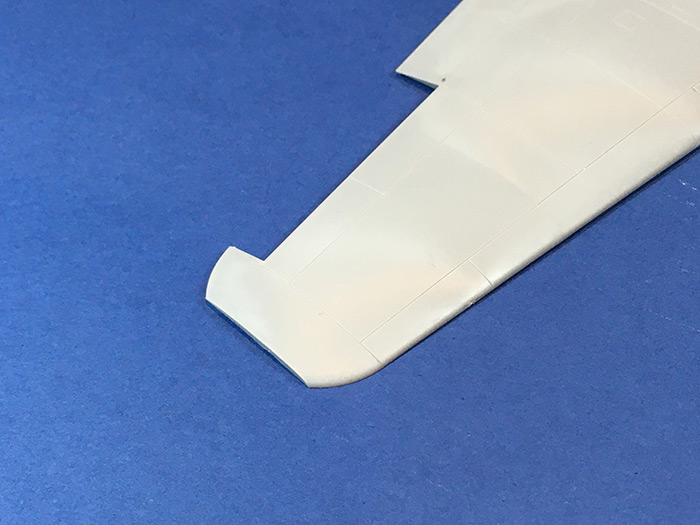
The wings will be heavy assemblies and it appears at first glance that they merely butt join onto the fuselage (an accident waiting to happen should the model be picked up the wings). However, this is not the case here and ICM actually provides spars that project from the sides of the fuselage onto which the wings slide. These should hopefully hold the wings securely.
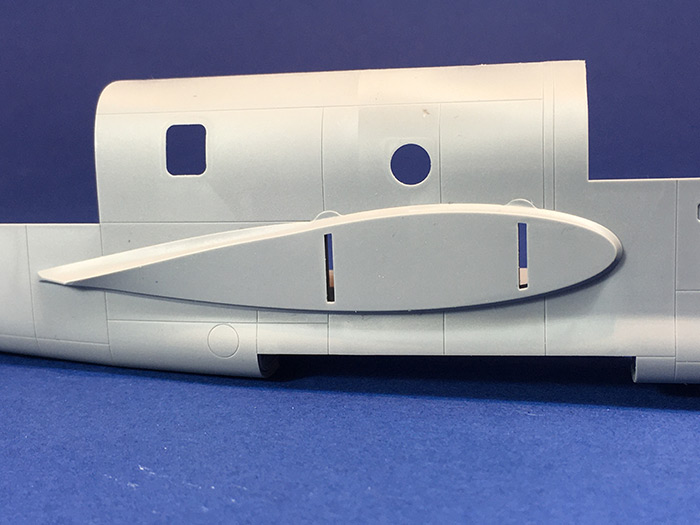
The clear parts of the kit are well done and are very clear, but again I think that they will need to be carefully removed from their sprues in order to avoid cracking them as the plastic is very hard.
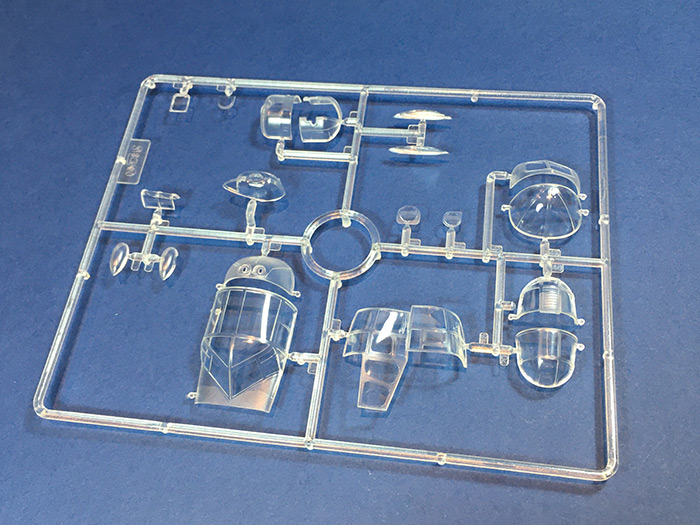
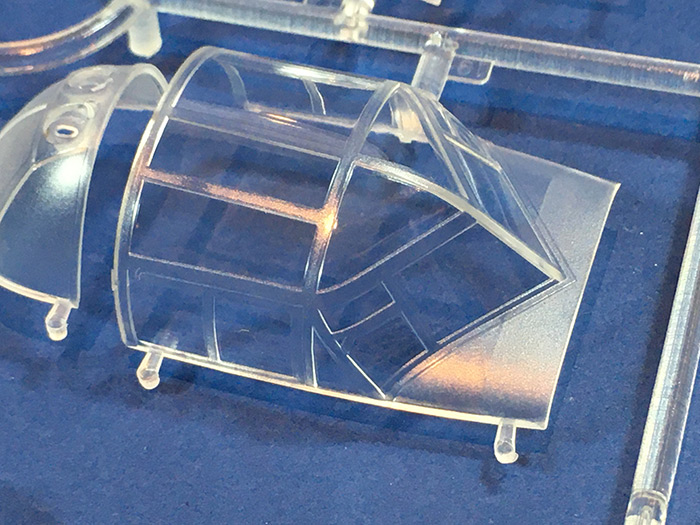
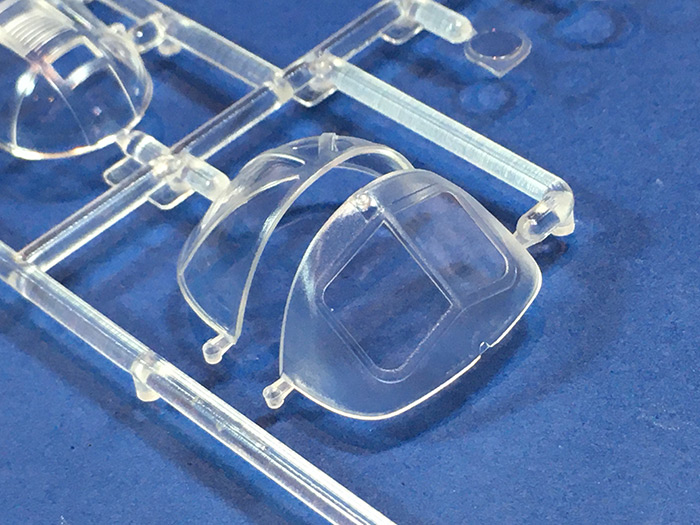
There is a template included in the instruction booklet to help the modeller cut masks for the windows. This may prove very useful as there are no less than 47 separate windows. I’m not sure how useful these will be in practice though and many modellers may wait until companies such as eduard or Montex come to the rescue with some pre-cut masks!
Optional parts are provided for the ‘chin’ gun position which is applicable to some of the aircraft that can be modelled using the kit.
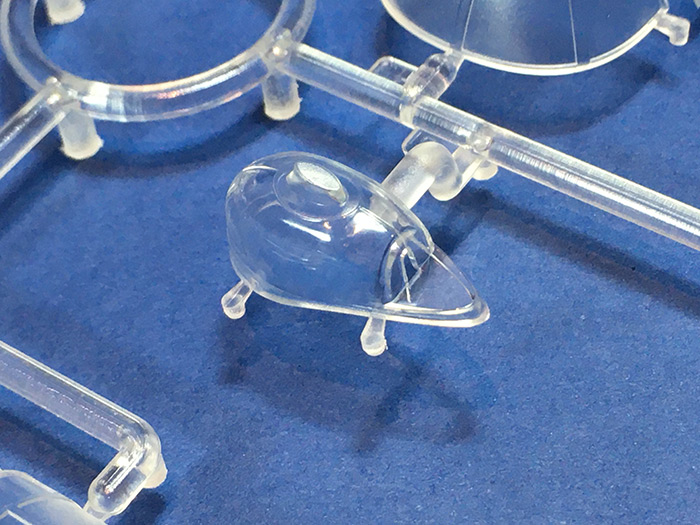
There are unused parts on the clear sprue and a separate sprue for the turret which suggest further versions of the kit such as the Mk. 1a and the Mk. 2 might arrive in the future.
The fuselage halves also have their own sprues which I suppose could mean that with some new parts a kit of the Australian manufactured Beaufort could be produced. I understand that these had differently shaped tail fins to cater for stability problems caused by the deep front fuselage – something never cured on machines manufactured in Britain.
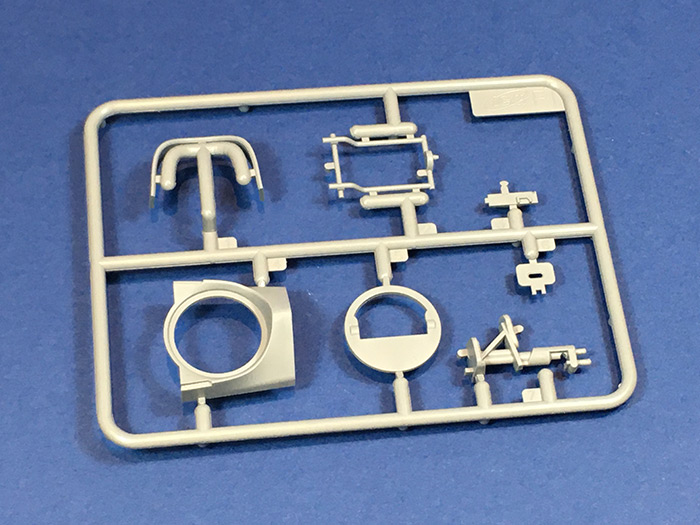
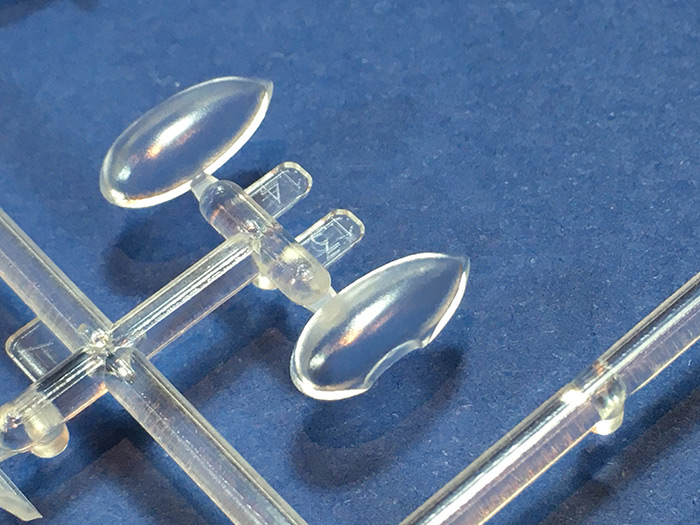
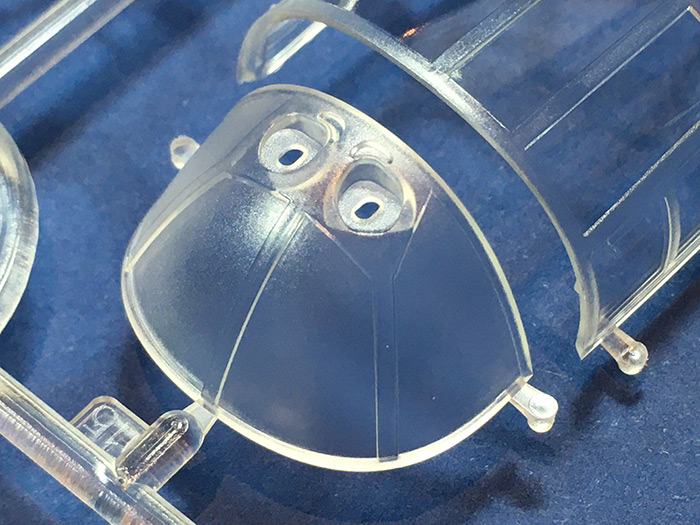
The instructions seemed to me to be easy to follow. The assembly seems to be more ‘conventional’ than ICM’s recent He 111 kits.
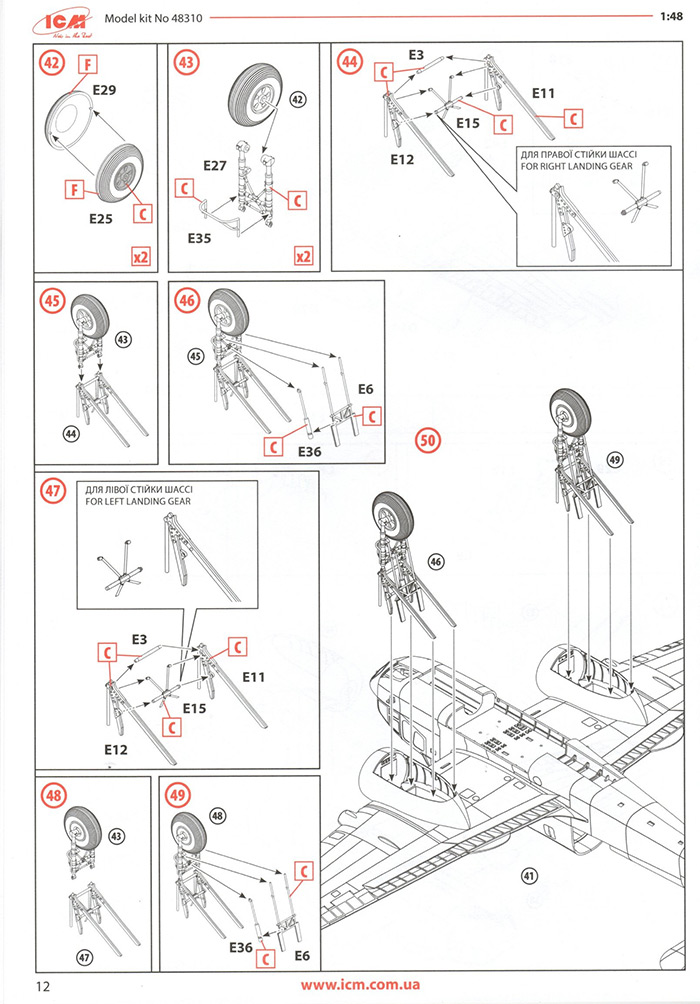
There are markings provided on the transfer sheet for five aircraft spanning the early war period from 1939 to 1941. There are full colour diagrams of the camouflage schemes provided.
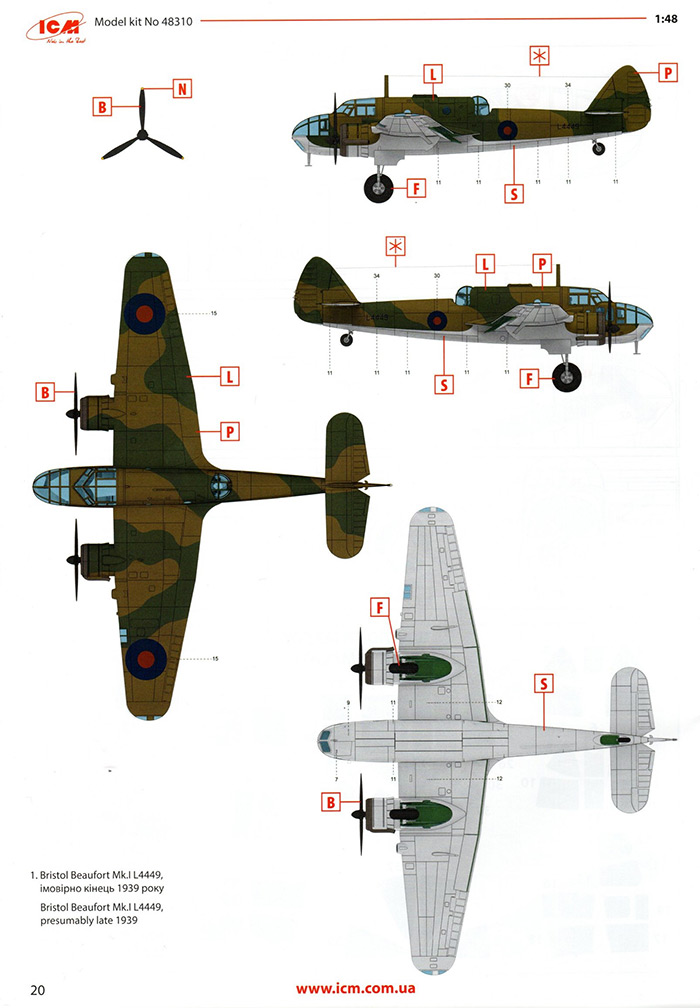
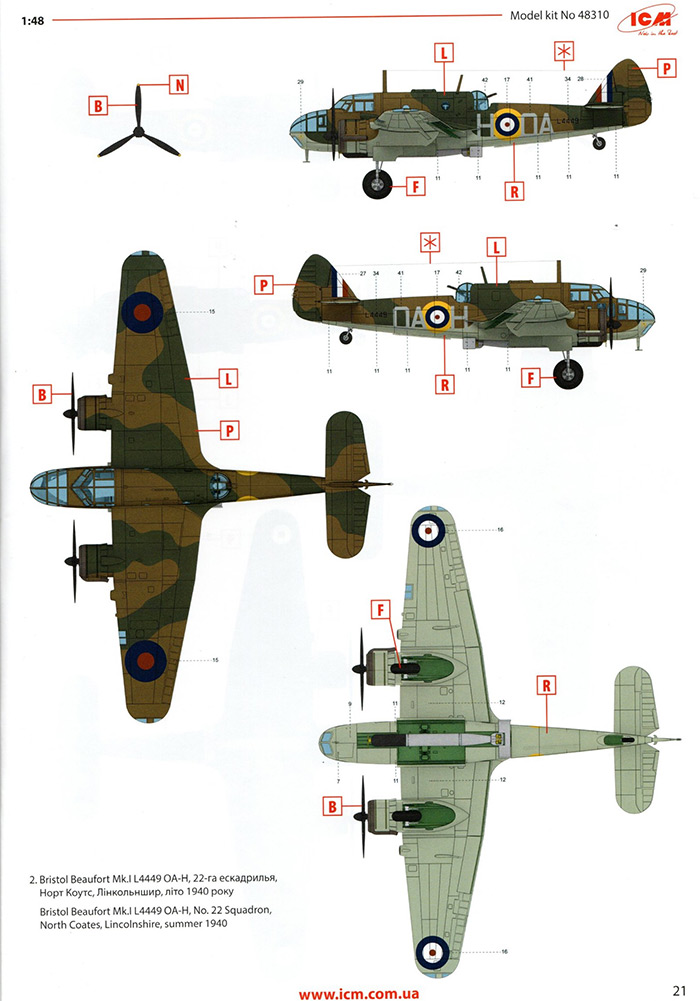
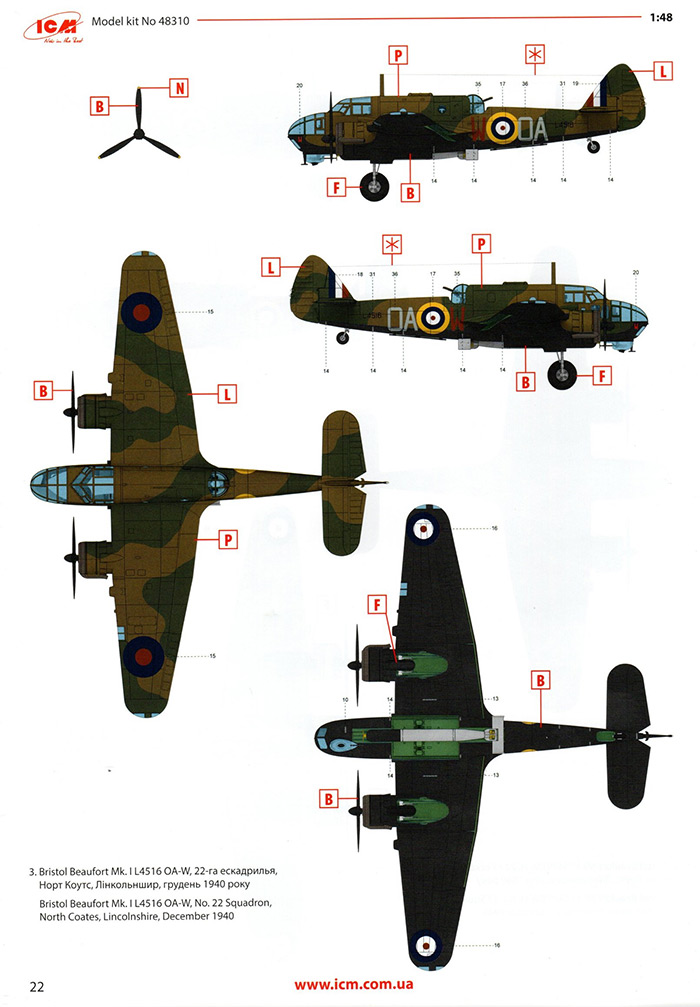
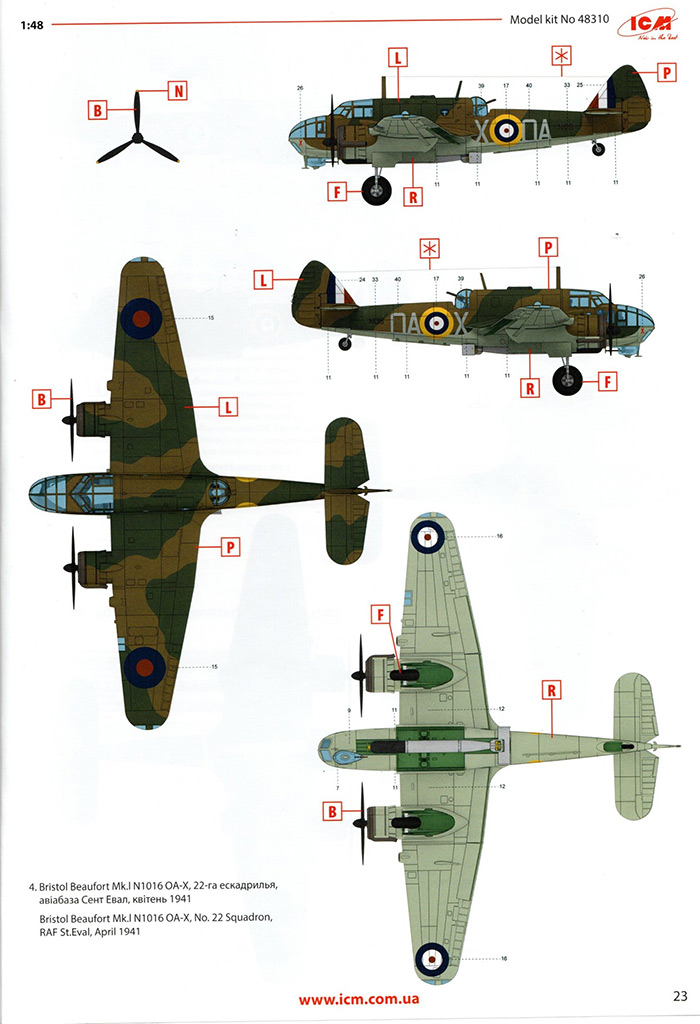
Some of the descriptions of the colour schemes seem a little odd to me. The interior is described as being ‘US Dark Green’ when I think that a much lighter ‘cockpit green’ would be more appropriate.
Also, one of the schemes is shown as being ‘Dark Grey’ and ‘Extra Dark Green’ when maybe a maritime scheme of Dark Sea Grey and Extra Dark Sea Grey might have been more likely? Maybe these odd colour descriptions are there just because of the way they have been translated from the original Ukrainian, but I think it’s probably worth checking your references here.
The transfers look well printed and glossy. There are some large areas of carrier film around some of the squadron codes. Some modellers might decide to remove before use. Although as I have found to my cost in the past this can introduce its own problems with transfers being difficult to move or even folding up on the surface of the model.
As the carrier film looks glossy it shouldn’t be too hard to disguise if the transfers are used on a gloss varnished surface and perhaps over-sprayed with further coats of gloss varnish to disguise the edges of the film afterwards.
When I build the kit, I intend to apply some spare transfers from the sheet to a piece of appropriately painted and varnished scrap card to see how they perform before using them on the model. This has nothing to do with any worries about the quality of the kit’s transfers – I just think it’s generally a good idea.
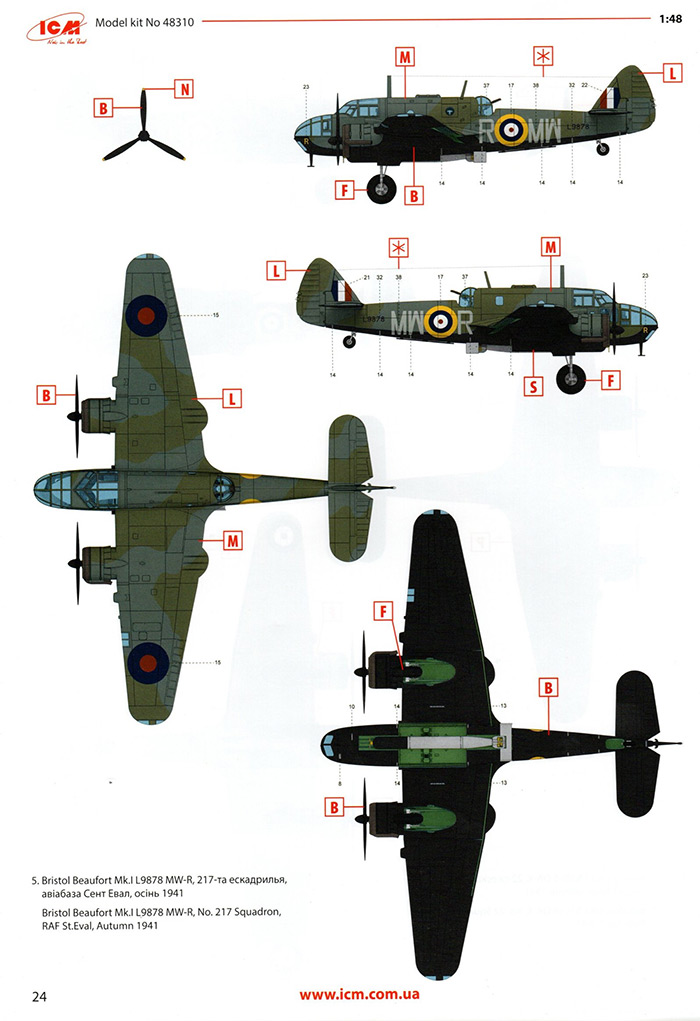
I have no plans against which to check the dimensions of the kit parts – but then again, I don’t do that kind of thing anyway. I’m just really glad that ICM have actually been able to produce this kit under the circumstances and it looks as if it will build up into a Beaufort so that’s good enough for me.
There are a few things that the modeller might like to add such as internal wiring, ignition wires for the engines and brake cables. These items should be easy to apply using soft wire or other suitable material.
There is no etched brass fret in the kit so the modeller may wish to add seat belts from an aftermarket source. I’m not actually sure what these would have looked like, but I assume you can’t go wrong with a set of early war RAF seat belts from an after-market manufacturer such as eduard.
Conclusion
I have yet to build this kit, but I think that there may be a few things to look out for. For example, an optional gun is supplied mounted in the beam position which protrudes through the fuselage which might provide some interesting masking challenges if used. There are also large clear parts which need to be joined together at the front of the aircraft to enclose the cockpit. Dealing with things like that always gives me headaches.
These concerns have nothing to do with the quality or design of the kit. They are just there because of the way the original aircraft was put together. In its attempts to design an effective and heavily armed torpedo bomber the Bristol company clearly did not take into account the potential problems they might have presented to model makers 70 years later. I can feel a strongly worded letter coming on!
I think that this looks like a great kit and I look forward to building it in the near future – and if someone would get a move on and produce a large and highly comprehensive set of canopy masks in the next few weeks that would be much appreciated.